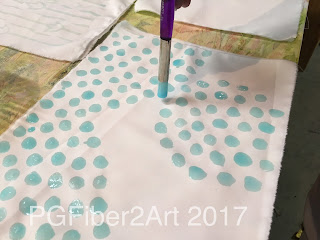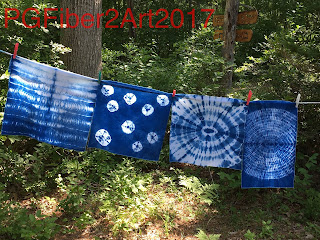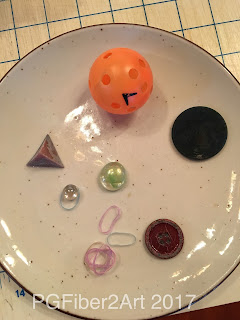We've written many times about our state quilt guild,
Virginia Consortium of Quilters, which meets 4 times a year in various locations around the state. For those new to our blog, our one-day meetings consist of a workshop (usually 3-4 choices), a box lunch, and a business meeting. One of the workshop options is always Come Quilt with Me, where you choose to work on a previously started project rather than start something new. It's always a fun day of quilting and fellowship with fellow quilters from all over Virginia. Our August meeting was held in Newport News and we had a great turn out of 80+. It was also the opening of registration for our biannual retreat,
Celebration, which takes place next April 26-29 at Smith Mountain Lake 4-H Center. Here are some pictures from show and tell at the end of the day.
Pretty Leaves, Punkin' was a fusible applique class taught by Joy Duke.
Lee Taylor of SewLoveLee in White Stone, VA, taught Free Wheeling Single Girl, a pattern by
Denyse Schmidt. The above photo shows examples of a finished block.
A third class was Improv Piecing and Quilting taught by Mary Menzer. This group got their quilts pieced and partially quilted.
Meryl Ann Butler taught Secrets of Color for Quilters which focused on value and hue.
Following class show and tell, members were able to share other projects they brought. Unfortunately I don't have everyone's name.
Sue Burton shares a quilt top that she completed.
Karan Fisher made the quilt above.
If I remember correctly these were paper pieced blocks.
Above is one a number of charity quilts that were started at the May meeting and turned in in August. These are going to the ALS Hopes and Dreams quilt project.
Here's a great example of improv piecing.
Terry Hanson made the quilt above, which I think was a block(s) of the month project.
This quilt was made by Laura Beard.
Our next meeting takes place November 11 in Manassas. The newsletter with details on location, workshops, and registration will be out in September. It will be published on the website when it is available. Come join us!























































